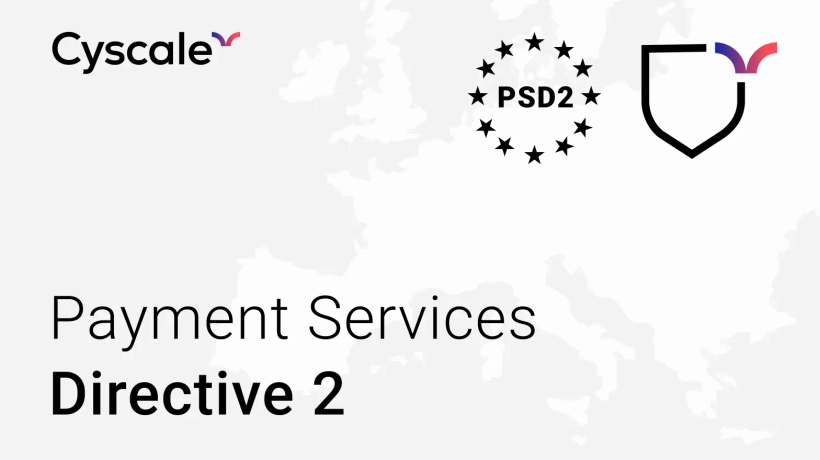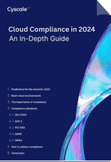PSD2 Requirements through the Technical Security Lens
CPO and Co-founder at Cyscale
Friday, March 4, 2022

The fintech sector has known an impressive growth in funding over the past year. A recent Insider Intelligence report shows that the global funding for fintech in the first three quarters of 2021 reached $94.7 billion, which is shy of the total for 2019 and 2020 combined. In the UK alone, fintech funding nearly doubled in the mentioned timeframe, as compared to the year before (2020).
Around the fintech businesses, entire ecosystems have emerged. There are national as well as international level organizations that collaborate and launch initiatives to drive the competition as well as innovation in the sector. Regulatory bodies are part of the ecosystems as well, making sure that businesses are doing the best they can to protect fintech consumers.
The purpose of this article is to take a deeper look at the most important regulations for payment services (which is a large subset of fintech services) in Europe, trying to showcase the security requirements for the technology at the core of these businesses, its governance included.
We keep in mind that although the UK has left the European Union, they decided to adopt a great part of the regulation under their legislation as well.
The PSD2 Directive
Probably the most important European regulation that impacts fintech is the PSD2 Directive. Developed by the European Parliament and the European Council, introduced in 2015, and enforced since 2018, it describes rules, rights and obligations of Payment Service Providers and the users of these services. In the next sections, we go through the structure of the document, emphasizing the articles that regulate the “tech” in “fintech”.
It starts with 113 points that set up the context for the regulation and then follows with 6 main sections (also called titles).
Scope
The first section clarifies the subject matter (who is affected), and that is Payment Service Providers. As we’ll see below, this includes traditional financial services providers, for example banks, but also new providers, such as fintechs. There’s also an article regarding scope: it applies to payment services provided within the European Union.
Payment Service Providers are grouped under 6 distinct categories, but most fintechs fall under payment institutions and electronic money institutions.
Any institution that provides payment services (enumerated below) after being authorized to do so, becomes a payment institution.
The different types of payment services, as understood from Annex 1 of the Directive are:
- operating a payment account for a user
- placing or withdrawing cash from a payment account
- payment transactions (i.e. transfers of funds) within the same provider, or to an external provider
- issuing of payment cards
- issuing sets of rules agreed between the issuer and the user that are then used to initiate a payment
- accepting and processing payment transactions
- money remittance, which is transfer of money without any payment accounts being created or used (think Western Union)
- payment initiation — initiate payment orders on behalf of the user (with his previous consent), from a payment account that is held at a different provider. This is possible due to the open banking framework.
- account information — provides information on payment accounts held by the user at a different provider. Again, this service has been made possible through open banking.
An electronic money institution is a legal entity that is authorized to issue electronic money. An electronic money institution can at the same time be a payment institution. There is a specific authorization license for each of these types of providers.
Becoming a PSP
The second section, or title, adds further provisions for Payment Service Providers, including the procedure to become licensed as one.
Article 5, titled “Applications for authorization”, contains the list of artefacts to submit when applying to become a payment institution. Among these, the directive requires a security policy document that must contain "a detailed risk assessment", along with the "security control and mitigation measures taken" to protect users against identified risk. It also explicitly states that the policy must indicate how the institution ensures "a high level of technical security and data protection, including of the software and IT systems used", and even when these are entirely or partly outsourced.
As we can see, already during the application process, a fintech business must have technical security controls in-place, as well as ways to describe them.
The third section (title) of the directive refers to the transparency of conditions, as well as information requirements for payment service providers, meaning data regarding the payments which must be communicated to the service user at specific points in time. It does not contain any requirements for tech.
Proper Security
The fourth section (title) details the rights and obligations around the provision and use of payment services, of both the providers and the users. This section is again relevant for those in charge of technology inside fintech companies providing payment services.
Article 66 and Article 67 describe the obligations of PISPs (Payment Initiation Service Providers) and AISPs (Account Information Service Providers), which are both types of payment service providers.
An example of a PISP would be an application that, based on previously given user consent, makes regular (i.e. monthly) payments from the user’s bank account, and invests those funds on behalf of the user. In other words, by providing payment initiation services, the app makes payment transactions without the user having to do anything.
To understand an AISP, think of an application that queries information about a user’s bank account and then analyzes that data in order to give the user insights about his financial behavior. Previously given user consent is, of course, mandatory.
Under PSD2, the PISP and the AISP must:
-
Protect user's personalized security credentials (PSC), if used, by transmitting them safely, and making sure they are not shared with other parties.
PSCs are, for example, your internet banking password, the code you use to authenticate to your neobank's mobile app, or any other means of authenticating with a Payment Service Provider. These credentials should not be shared with a PISP, or, when they are, they must be handled securely.
-
Ensure that any information received about the payment service user is only provided to the payee (with user consent)
-
When communicating with the entity that provides the user's payment account (i.e the bank), use common and secure open standards of communication
-
Not store sensitive payment data of the user
-
Not request from the user data that is not needed, in order to provide the services
-
Not use, access, or store any user data for purposes other than the provided service
-
In case of payment transactions, not modify the transaction amount
Article 70 states the obligations of a Payment Service Provider in relation to payment instruments (remember, these may be payment cards, but also procedures agreed between the user and the service provider on how to initiate payment orders). Again, the protection of personalized security credentials is required, by making sure that they are not accessible to other parties.
Article 74 states that when a Payment Service Provider doesn’t enforce strong customer authentication (SCA; think MFA) to protect transactions, it is liable for any financial losses incurred by the payer because of that.
Article 89 details the liability of Payment Service Providers in case they fail to correctly and in-time execute payment transactions. This part stresses out the importance of a solid business continuity policy and plan.
Article 95 requires two things from the Payment Service Providers:
- mitigation measures and control mechanisms in place, to manage operational and security risks
- to regularly provide operational and security risk assessments to competent authorities, as well as evidence that mitigation measures are adequate
Article 97 requires from the PSP the implementation of strong customer authentication, meaning multi-factor authentication, involving something the user knows, something the user possesses or something that the user is (knowledge, possession or inherence). It also requires that “payment service providers have in place adequate security measures to protect the confidentiality and integrity of payment service users’ personalized security credentials”.
Ending Notes
Finally, Article 98 requires that, by July 2017, the Euro Bank Association (which is another EU institution) will have drafted regulatory technical standards to address the security requirements from previous articles (strong customer authentication and protecting the users’ personalized security credentials).
The last two sections refer to procedures for the settlement of disputes, user information rights, and final provisions, respectively, but neither of them contains additional technical requirements.
The regulatory technical standards developed by the EBA will be the subject of the next article in the series, where we will take a deeper dive into what they mean for a fintech.
CPO and Co-founder at Cyscale
Manuela directs product development at Cyscale with an emphasis on customer needs and cybersecurity best practices. As CPO, her role is pivotal in ensuring that Cyscale’s solutions not only meet market demands but are also infused with robust security measures to support the company's commitment to safe, compliant growth.
Further reading
Cloud Compliance in
2025: An In-Depth Guide

The whitepaper talks about ISO 27001, SOC 2, PCI-DSS, GDPR, HIPAA.
Download WhitepaperCloud Storage
Misconfigurations
Build and maintain a strong
Security Program from the start.
Share this article
Stay Connected
Receive our latest blog posts and product updates.
TOP ARTICLES
Compliance
Our Compliance toolbox
Check out our compliance platform for cloud-native and cloud-first organizations:

LATEST ARTICLES
What we’re up to

Why the world needs Cyscale in a post-Wiz era





